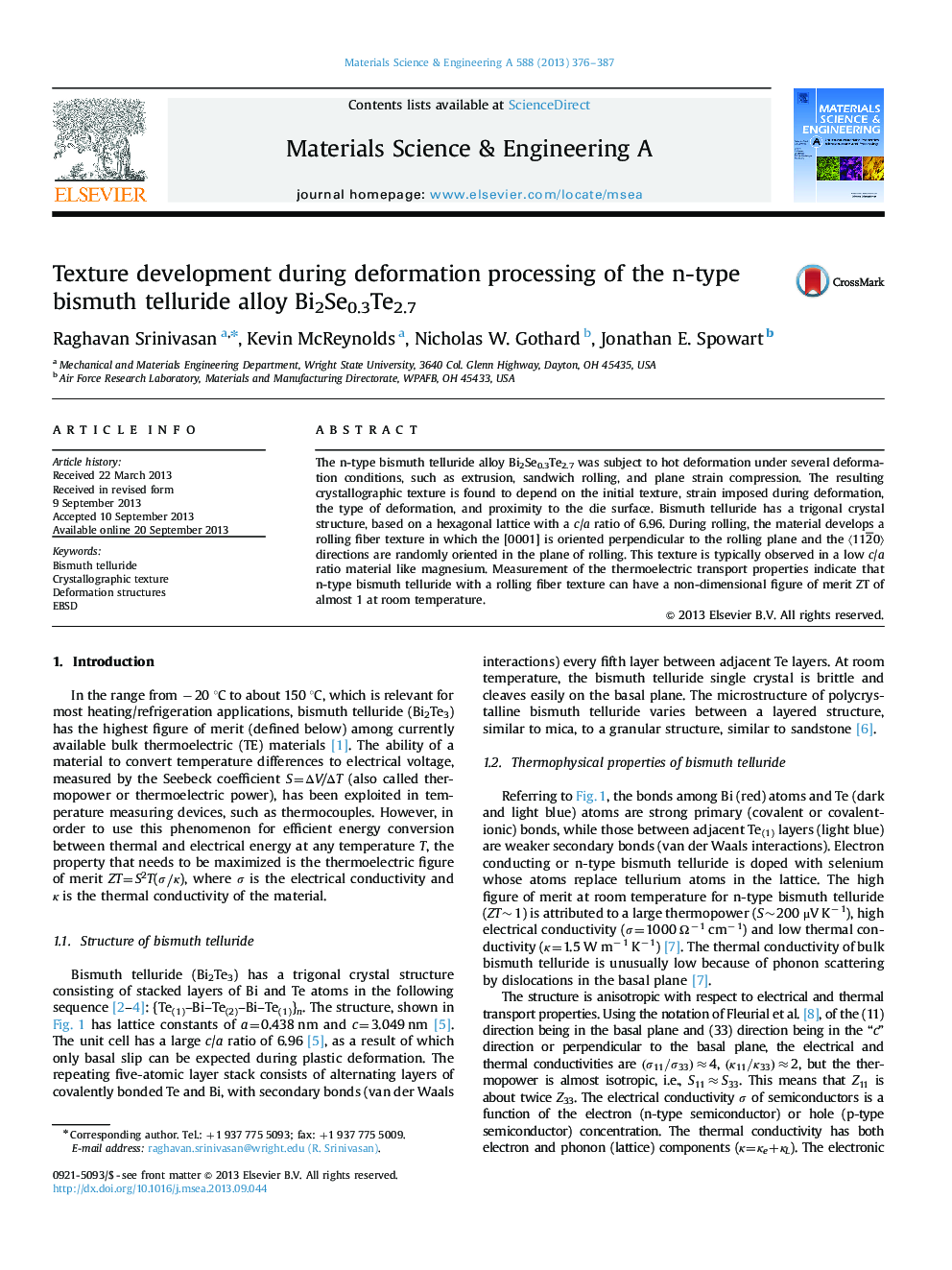| Article ID | Journal | Published Year | Pages | File Type |
|---|---|---|---|---|
| 1575674 | Materials Science and Engineering: A | 2013 | 12 Pages |
Abstract
The n-type bismuth telluride alloy Bi2Se0.3Te2.7 was subject to hot deformation under several deformation conditions, such as extrusion, sandwich rolling, and plane strain compression. The resulting crystallographic texture is found to depend on the initial texture, strain imposed during deformation, the type of deformation, and proximity to the die surface. Bismuth telluride has a trigonal crystal structure, based on a hexagonal lattice with a c/a ratio of 6.96. During rolling, the material develops a rolling fiber texture in which the [0001] is oriented perpendicular to the rolling plane and the ã112¯0ã directions are randomly oriented in the plane of rolling. This texture is typically observed in a low c/a ratio material like magnesium. Measurement of the thermoelectric transport properties indicate that n-type bismuth telluride with a rolling fiber texture can have a non-dimensional figure of merit ZT of almost 1 at room temperature.
Related Topics
Physical Sciences and Engineering
Materials Science
Materials Science (General)
Authors
Raghavan Srinivasan, Kevin McReynolds, Nicholas W. Gothard, Jonathan E. Spowart,
